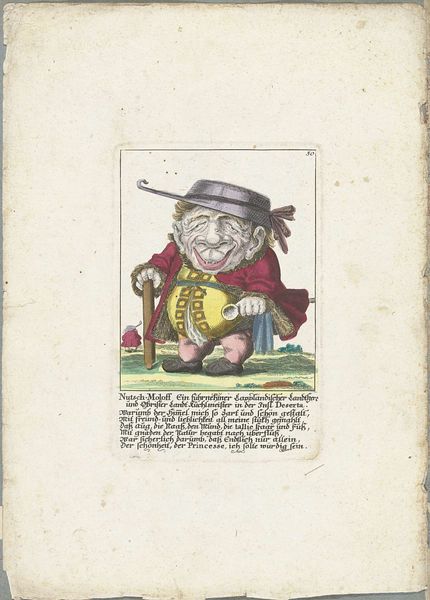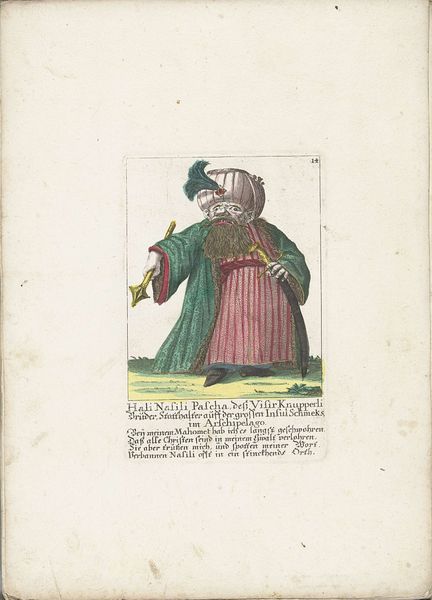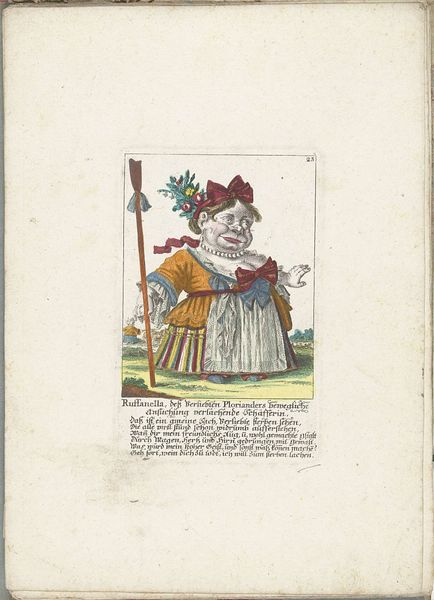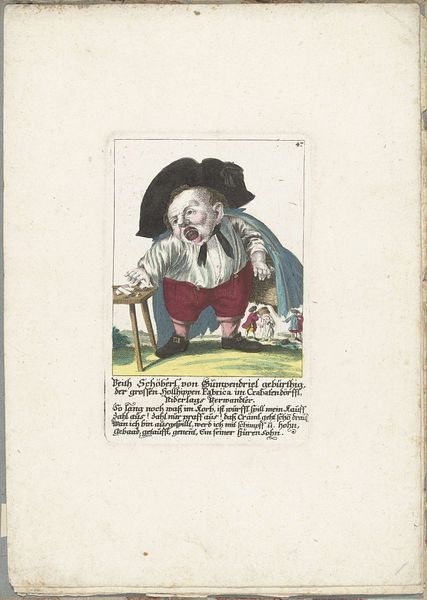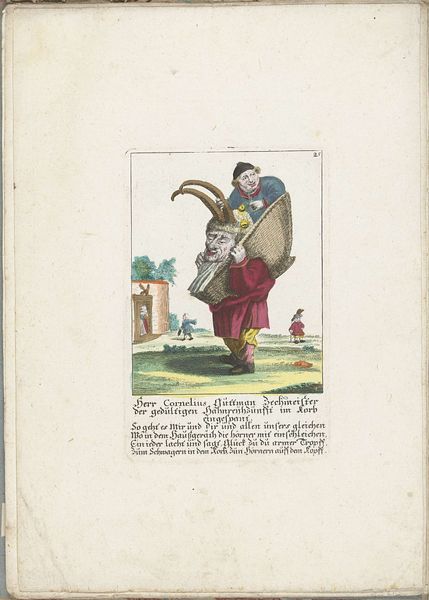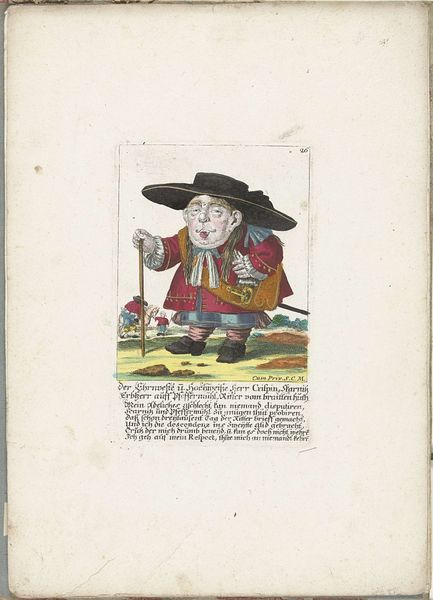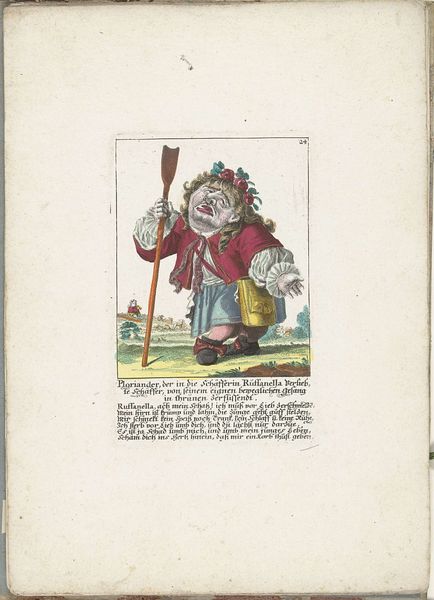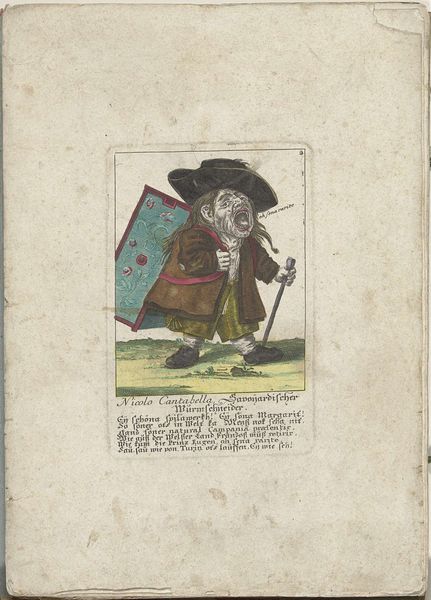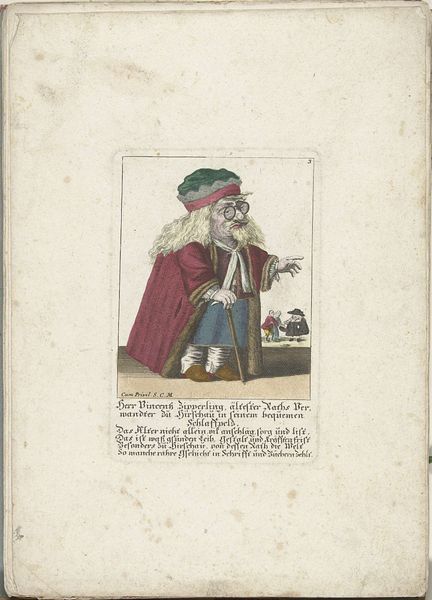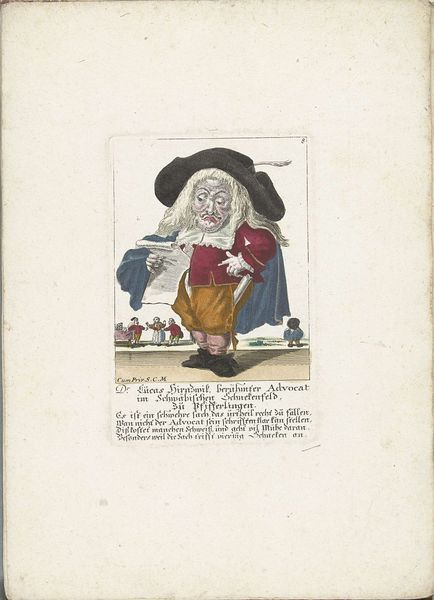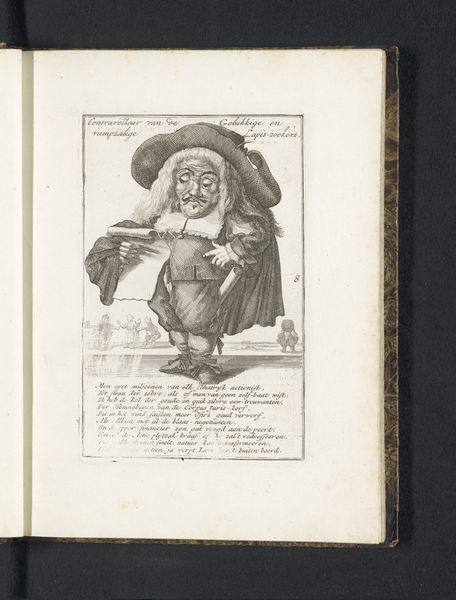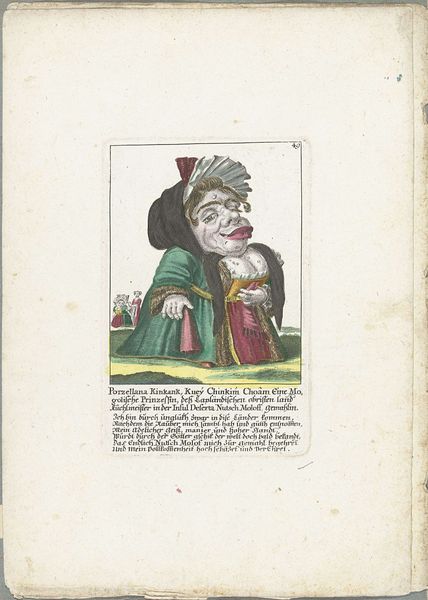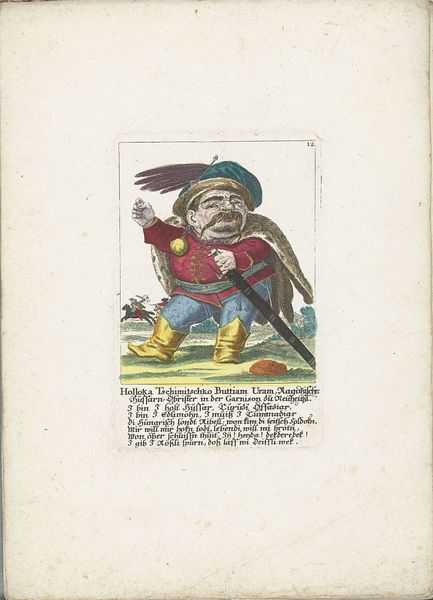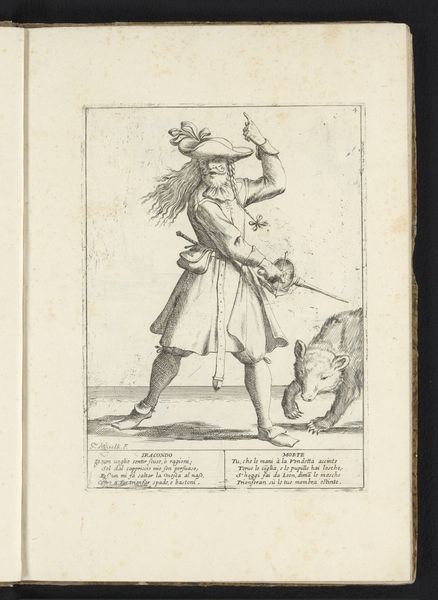
De dwerg Piperouk als directeur van een tabakscompagnie, ca. 1710 1705 - 1715
0:00
0:00
drawing, coloured-pencil, painting, watercolor
#
portrait
#
drawing
#
coloured-pencil
#
baroque
#
painting
#
caricature
#
watercolor
#
coloured pencil
#
genre-painting
Dimensions: height 170 mm, width 110 mm, height 320 mm, width 225 mm
Copyright: Rijks Museum: Open Domain
Curator: Let’s discuss this fascinating piece from around 1710. It's titled "De dwerg Piperouk als directeur van een tabakscompagnie," or “The Dwarf Piperouk as Director of a Tobacco Company.” The work is attributed to Martin Engelbrecht. It combines watercolor and coloured pencil, depicting, as the title suggests, a dwarf. Editor: The first word that comes to mind is “grotesque.” It’s immediately striking, this caricature. He dominates the scene with a posture that suggests power and disregard for the viewer. What can you tell me about its historical significance? Curator: Caricatures were extremely popular as satirical commentary. Dwarfs in the 17th and 18th centuries were often symbolic figures – seen as wise, grotesque jesters, even omens or figures of mockery. Note his clothing; a flamboyant sleeping cap, an elaborate smoking pipe. These items would’ve carried strong connotations at the time. Editor: Exactly! This connects so directly to issues of class and commerce of the period. Engelbrecht, through Piperouk, critiques the Dutch tobacco trade’s elite figures. The image reveals power dynamics—the smallness implying moral shortcomings within commercial society, perhaps literally diminishing their importance. The smoke billowing from his pipe visually connects his image and that era’s booming industry of Virginian and Brazilian Tobacco. Curator: Indeed, notice the small figures in the background seemingly in awe, reinforcing Piperouk's assumed position. The vibrant colouring also heightens the character’s absurdity, intensifying its satirical thrust. Even now, its visual elements remain striking; the artist plays into conventional symbols to mock authority and opulence. Editor: And what a statement on the social ramifications! In this sense, Engelbrecht creates space to unpack critical commentary surrounding both early capitalism and colonialism's devastating, long-lasting effects through art history. What’s been unveiled today only deepens this portrait’s unsettling social dimension and lasting relevance. Curator: A clever piece—one filled with layers of complex symbols. Thank you for drawing out more of its resonance!
Comments
No comments
Be the first to comment and join the conversation on the ultimate creative platform.
